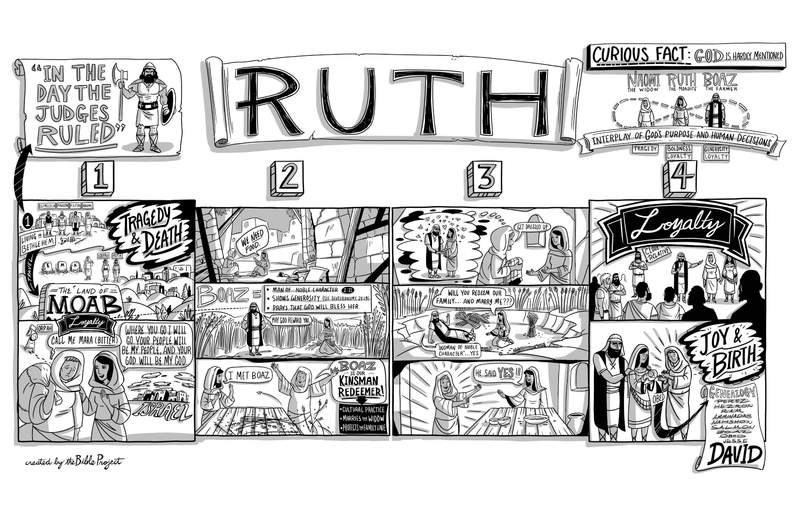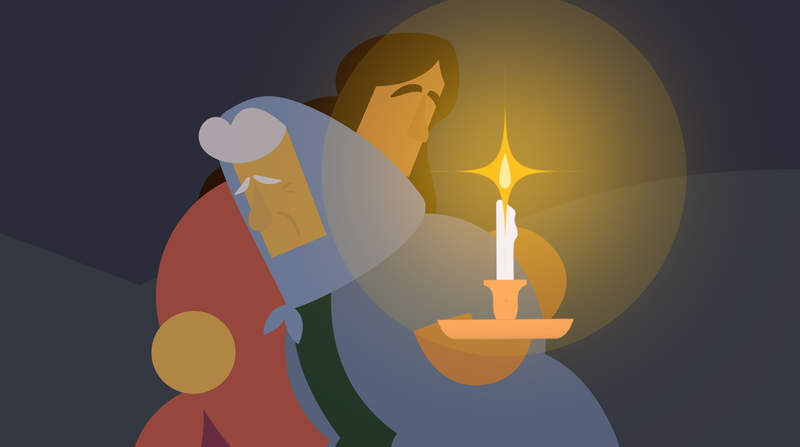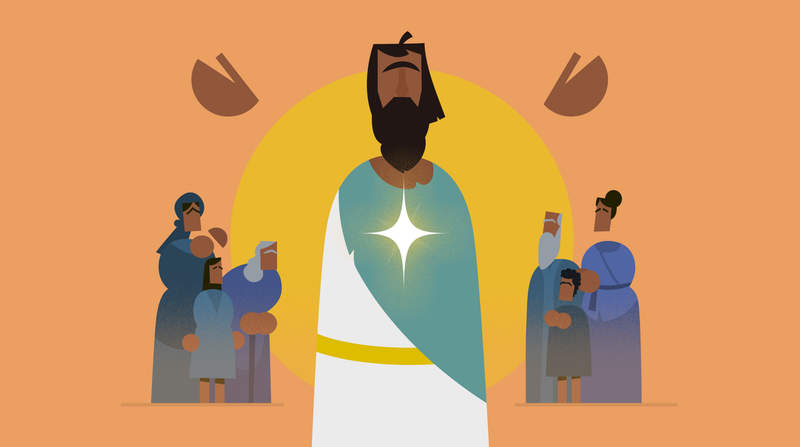The Book of Ruth
About

This short story is a brilliant work of theological art that invites us to reflect on the question of how God is involved in the day-to-day joys and hardships of our lives. There are three main characters in this book: Naomi the widow, Ruth the Moabite, and Boaz the Israelite farmer. Their story is told in four chapters that are beautifully designed. Let's dive in and see what unfolds.
Who Wrote the Book of Ruth?
Context
Key Themes
- Human devotion to God and neighbor
- Kindness and generosity bring life
- Reversal of fates
Structure
Ruth 1: Introducing Naomi and Ruth
Chapter 1 opens with the line, “In the day when the judges ruled” (Ruth 1:1). This reminds us of the dark and difficult days from the book of Judges. We find an Israelite family in Bethlehem—Elimelech, Naomi, and their sons, Mahlon and Kilyon—struggling to survive through a famine. In search of food, they move into the land of Moab, Israel’s ancient enemy.
There, the father, Elimelech, dies, and the sons marry Moabite women, Ruth and Orpah. The sons soon follow after their father and die as well, leaving only Naomi and her daughters-in-law. With no reason to stay, Naomi tells them that she’s moving back home. She knows the life of an unmarried, foreign widow in Israel is going to be hard, so she compels them to stay behind. Orpah agrees, but Ruth shows remarkable loyalty to Naomi saying, “Where you go, I will go. Your people will be my people, and your God will be my God.” (Ruth 1:16) The two of them return to Israel, and the chapter concludes with Naomi changing her name to Mara, which means “bitter,” as she laments her tragic fate.

Ruth 2: Ruth Meets Boaz
Chapter 2 begins with Naomi and Ruth discussing where to find food, and it just so happens to be the beginning of the barley harvest. Ruth goes out and happens to end up picking grain in the field of Naomi’s relative, Boaz, who we’re told is a “man of noble character.” He notices Ruth and, after finding out about her story, shows remarkable generosity. He makes special provisions for the immigrant Ruth to gather in his field, just as the Torah commands (Deut. 24:19). Boaz is so impressed by Ruth’s loyalty to Naomi that he prays God will reward her for her boldness. After Ruth comes home that day, Naomi finds out that she met Boaz, and she’s thrilled. Boaz is their “family redeemer.” This phrase refers to a cultural practice in Israel where if a man in the family died and left behind a wife, it was the redeemer’s responsibility to marry the widow and protect the family. Naomi begins to hope that perhaps there is still a future for her family.
Ruth 3: Ruth Asks Boaz to Marry Her
Chapter 3 starts with Naomi and Ruth making a plan to get Boaz to notice their situation. Ruth will stop wearing the clothes of a grieving widow and show that she’s available to be married again. Ruth goes to meet Boaz on the farm at night. As she approaches, Boaz wakes up, startled, but Ruth makes her intentions clear, asking if Boaz will redeem the family and marry her. Boaz is once again amazed by Ruth’s loyalty to Naomi and her family and calls Ruth a “woman of noble character.” He tells her to wait until the next day, when he will redeem Ruth and Naomi legally before the town elders. Ruth returns to Naomi where they marvel together at the night’s events.
Ruth 4: Conclusion and the Role of God in the Story
In chapter 4, it all comes together. It turns out that there is a closer family member than Boaz who is also interested in redeeming the family, but, at the last minute, he finds out he has to marry Ruth the Moabite and declines. Boaz, on the other hand, knows Ruth’s true character, and he acquires the family property of Naomi’s husband and marries Ruth. Just as Ruth was loyal to Naomi’s family, so too was Boaz loyal to their family.
The story concludes with a total reversal of all the tragedies from chapter 1. The deaths of sons and husbands are reversed as Ruth is married again and gives birth to a new son, granting joy to her and Naomi. This symmetry becomes even more remarkable. The opening tragedy followed by a great act of loyalty on the part of Ruth is matched by Boaz’s act of loyalty that leads to the family’s final restoration. All this highlights the design of the internal chapters as well. Each begins with Naomi and Ruth making a plan for their future, followed by a providential meeting between Ruth and Boaz, concluded by Naomi and Ruth rejoicing at what has taken place.
The story is beautifully written, and this literary design actually connects with an interesting feature of the story: how little God is mentioned. The characters talk about God a few times, but the narrator hardly ever mentions God explicitly doing anything in the story. This is its subtle brilliance because God’s providence is at work behind every scene, weaving together the lives of the characters. While Naomi’s tragedy leads her to think that God is punishing her, we discover he’s actually on a mission to restore her. And God accomplishes that restoration through Ruth’s boldness and loyalty. The reason why Ruth’s actions bring healing to her and Naomi’s life is because of Boaz, a no-nonsense farmer who is full of generosity and loyalty.

The story is a literary exploration of the interplay between God’s purposes and human decisions. God weaves together the faithful obedience of his people to bring about his redemptive purposes.
This leads into the actual end of the book, which is not a story. The book concludes with a genealogy that shows how Boaz and Ruth’s son, Obed, was the grandfather of King David, from whom came the lineage of the Messiah. All of a sudden, the seemingly mundane events in this story are woven into God’s grand story of redemption for the whole world. The small story of Ruth is taken up in the larger story of God’s purpose, and in this way, the book of Ruth invites us to consider how God might be at work in our own lives as well.